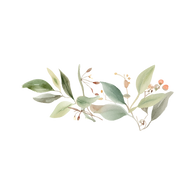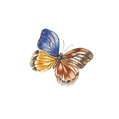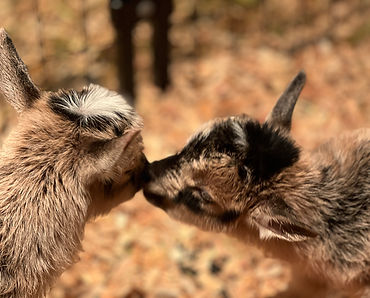Goatenance
Welcome to Goatenance, where we'll dive into caring practices on our farm. It is true that Nigerian Dwarf goats are small in size, however, they pack a punch in personality, productivity, and potential. For those who already know the basics, it’s time to dive deeper, this page is designed to give you tips and strategies to take your goat management to the next level.

Advanced Nutrition & Supplementation
While hay and grain are essential, there’s more to creating a perfect diet for Nigerian Dwarf goats:
-
Customizing Their Diet for Milk Production: If you’re looking to boost milk production, you'll want to provide a grain mix that’s tailored to your does' needs. Focus on higher protein (16-18%) and higher energy feed during lactation periods. Adding alfalfa hay, rich in calcium, during lactation helps support milk production and prevent deficiencies like hypocalcemia.
-
Probiotic Supplements: Probiotics can help regulate gut health, particularly when transitioning goats between different types of feed or during stress periods. A healthy rumen ensures better digestion and nutrient absorption, which supports both growth and milk yield.
-
Herbal and Natural Supplements: Herbs like nettle, dandelion, and red clover can be beneficial for your goats. Nettle helps support lactating does, while dandelion is known to boost the immune system. Using a blend of these herbs as a supplement can complement your goat's overall health.

_edited.png)



_edited.png)
_edited.png)


High-Performance Breeding & Genetic Management
If you’re serious about improving the genetics and production traits of your herd, consider these strategies:
-
Genetic Testing for Milk Yield and Quality: Advanced breeders know that the quality and yield of a goat’s milk can vary significantly by genetics. Utilizing DNA testing for traits such as butterfat content, protein levels, and disease resistance can inform your breeding decisions and help you fine-tune your herd for better milk production and herd health.
-
Selective Breeding for Temperament and Traits: Nigerian Dwarf goats are known for their friendly and playful personalities, but selecting for the best traits is still important. Focus on pairing goats with the best conformation, good udder structure, and calm temperaments for future generations.
-
Linebreeding vs. Outcrossing: If you’re looking to enhance certain traits (like coat color, size, or productivity), you may want to experiment with linebreeding—breeding within the same family to reinforce desirable characteristics. Alternatively, outcrossing (breeding with unrelated goats) helps introduce new genetics into your herd, improving vigor and reducing the risk of inbreeding depression.

_edited.png)




_edited.png)


Goat Behavior and Social Dynamics
Understanding the social and emotional needs of your goats is important to their wellbeing:
-
Goat Hierarchies and Managing Herd Dynamics: Goats are social creatures, and they form distinct hierarchies within their herds. In multi-goat environments, it's essential to understand the dynamics. Dominant goats may need more space, and lower-ranking goats may benefit from having "safe" spaces where they can escape bullying behavior. Ensuring a balanced herd with adequate resources for everyone can prevent stress and reduce fighting.
-
Enrichment Beyond Play Structures: While climbing structures are great, mental stimulation is just as important. Rotate food puzzles, introduce novel objects (like boxes or logs), and even consider scent enrichment (herbs or essential oils) to stimulate curiosity. This reduces boredom and stress-related behaviors.
-
Communication: Goats communicate through body language, vocalizations, and scent marking. Learning how to interpret their "language" will allow you to better care for their emotional needs, spot early signs of stress, and maintain harmony in the herd. Watch for changes in posture or vocal tone that could indicate illness, discomfort, or dominance disputes.

_edited.png)




_edited.png)


Advanced Health Maintenance and Preventive Care
Move beyond the standard deworming and vaccinations to maintain optimal health:
-
Proactive Parasite Control: While rotational grazing and herbal dewormers can be effective, it’s crucial to monitor parasite levels in a more targeted way. Regularly test fecal samples to identify specific parasites and use targeted dewormers accordingly, rather than relying on blanket treatments. This approach reduces resistance and ensures the best results.
-
Joint and Hoof Health: Nigerian Dwarf goats may be prone to joint issues, especially as they age. Consider incorporating joint supplements with glucosamine or MSM into their diet to support mobility. Hoof trimming isn't just about maintaining appearance—look for signs of joint pain or limping, which can indicate underlying issues like arthritis or foot rot.
-
Boosting Immunity in the Off-Season: During periods when goats are less active (like winter), supporting their immune system with vitamin and mineral supplements can reduce the likelihood of illness. Vitamin D is particularly important for goats that are housed indoors or lack adequate sunlight exposure.

_edited.png)




_edited.png)


Managing Stress and Creating a Low-Stress Environment
Stress can significantly impact the health and productivity of Nigerian Dwarf goats. Here are strategies to create a calm, low-stress environment:
-
Familiarity with Routine: Goats thrive on routine. Whether it’s feeding, milking, or handling, keeping a consistent schedule helps reduce anxiety. Introduce new experiences slowly and always maintain predictability in their daily lives.
-
Handling Stress Triggers: If you need to transport your goats or introduce new animals, do so in stages. New goats should be quarantined for a period to reduce the spread of illness and give them time to adjust. Likewise, minimize loud noises or sudden movements, as these can startle and stress goats.
-
Environmental Modifications for Stress Reduction: Creating a sense of privacy and security, such as hiding food in various places or using quiet, sheltered areas for milking, can help reduce stress. Goats are prey animals, so providing areas where they can retreat and feel safe is essential.

_edited.png)




_edited.png)


Advanced Milking Techniques for Better Yields
If you’re milking your Nigerian Dwarf goats, mastering advanced milking techniques can make a difference in the quality and quantity of milk:
-
Teat Conditioning: Just like athletes, goats benefit from conditioning. Before milking, perform gentle massages on the udder to help increase milk flow and avoid discomfort. Regular stimulation can improve milk production by promoting milk let-down.
-
Post-Milking Care: After milking, clean the udder with a gentle antiseptic solution to prevent mastitis. Consider applying a nourishing udder balm or oil to keep the skin soft and healthy.
-
Vacuum-Assisted Milking: If you have a larger operation or want to maximize efficiency, vacuum-assisted milking systems can reduce labor while improving hygiene and milk yield. These systems help maintain consistent pressure and reduce the stress of milking for both you and the goats.

_edited.png)




_edited.png)


Sustainability and Herd Management
Running a Nigerian Dwarf goat operation with sustainability in mind involves more than just growing healthy goats:
-
Waste Management: Goats produce significant waste, which can be a valuable resource when managed correctly. Create composting systems for manure and bedding to fertilize your crops or pastures. Additionally, consider using goats for weed control on less-cultivated land, reducing the need for chemical herbicides.
-
Self-Sufficiency Practices: If you’re aiming for a more self-sufficient lifestyle, incorporate your goats into broader farm management practices. Use goat milk to make cheese, soap, or other dairy products. Raise goats for both meat and milk, and consider breeding your own replacements to maintain a steady herd size without buying from outside sources.

_edited.png)




_edited.png)


Goat Fun Facts
-
Goats can remember the faces of people who treat them kindly or with food, just like a dog might remember its owner. If you’ve ever felt like your goat recognized you from the moment you enter the barn, you’re absolutely right!
-
If a goat is kept alone for too long, they can develop behavioral problems, like excessive bleating or a tendency to escape their pens. This is why it's recommended to have at least two goats, they provide companionship, comfort, and reduce stress for one another.
-
Goats are known for their unique and fascinating eyes. Their pupils are rectangular (horizontal slits), which might look strange to us but actually offers them an incredible range of vision. With this eye shape, goats can see a wide panoramic view, spanning up to 320 to 340 degrees, almost a complete circle around them.
-
Nigerian Dwarf goats are especially curious about new objects in their environment. You might find them climbing hay bales, climbing onto benches, or jumping onto anything that sparks their interest. If you're building a pen for them, make sure it’s escape-proof, or you might find your goats in surprising places!
-
Goats can communicate by headbutting, but it's not always aggressive. In fact, headbutting is often a playful behavior or a way of establishing dominance in a social hierarchy. Nigerian Dwarf goats, being small and compact, might use it for fun more than for territorial battles!
-
During breeding season, bucks have a very strong, musky odor to attract females, which is a natural part of the mating ritual. It’s a scent you won’t forget!
-
The “beard” is more common in male goats but can also appear in females. It's one of the defining features that gives Nigerian Dwarf goats their signature look!
-
Nigerian Dwarf goats are particularly known for their affectionate and playful personalities, and many will happily follow their owners around like loyal pets, seeking a scratch or cuddle.

_edited.png)




_edited.png)


_edited_edited_pn.png)